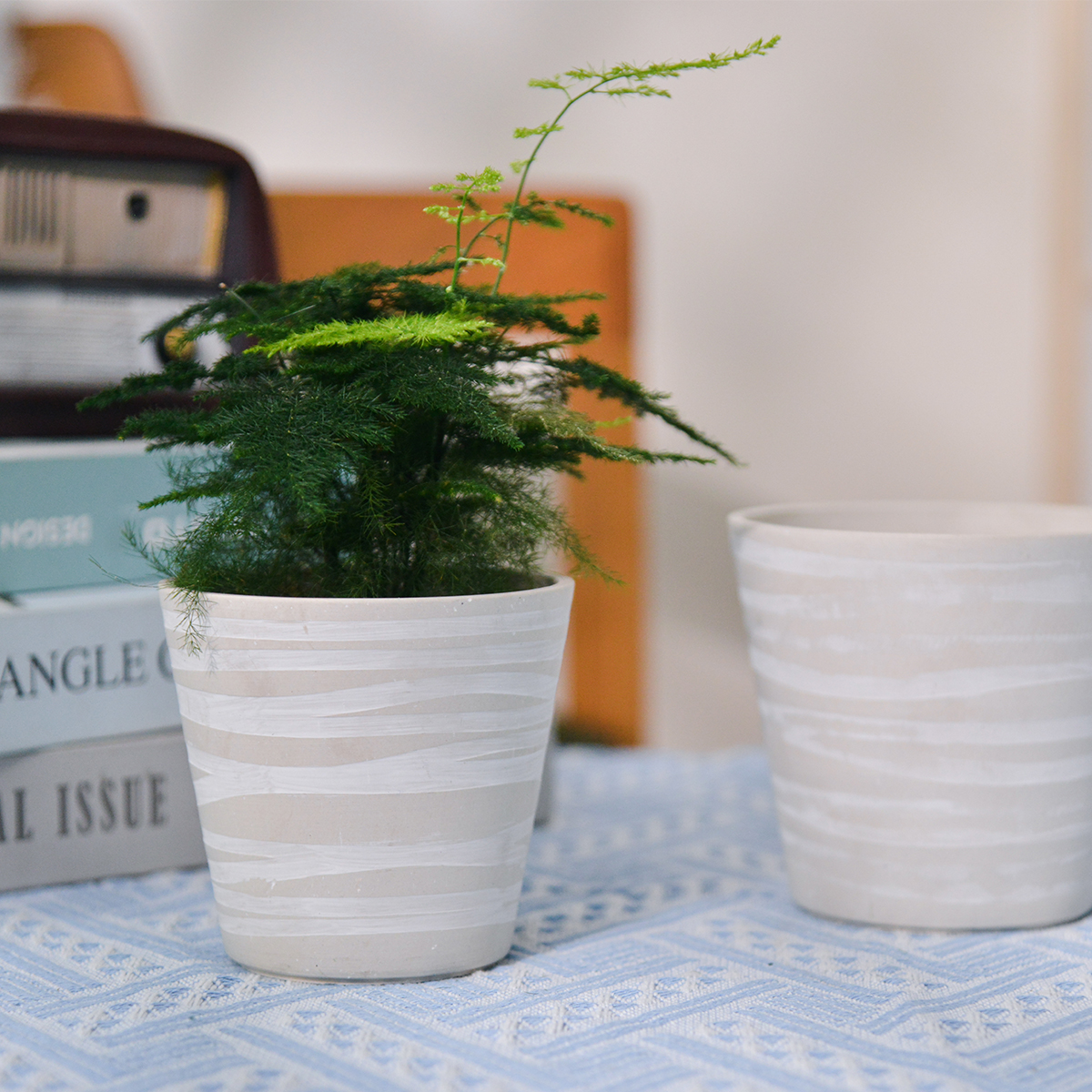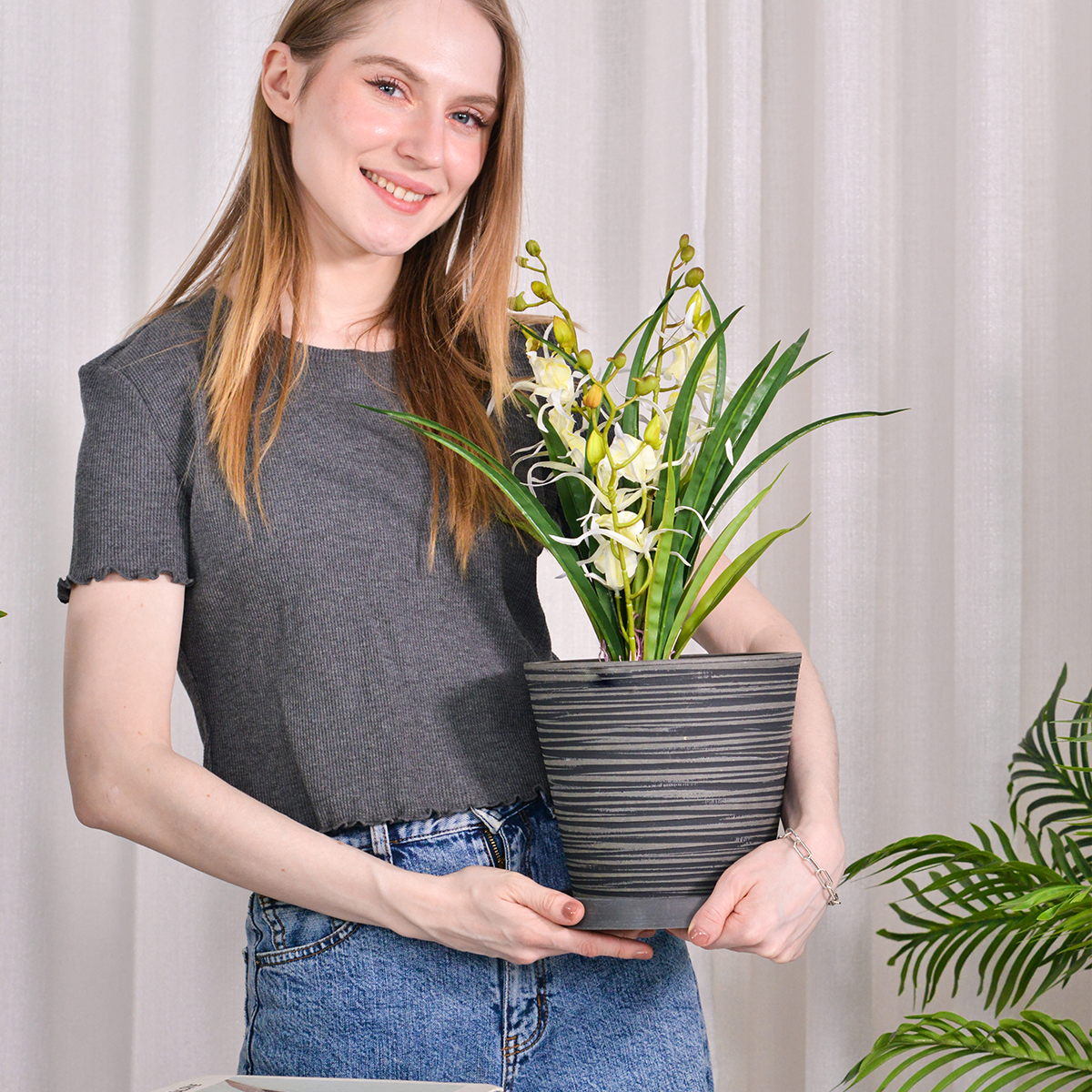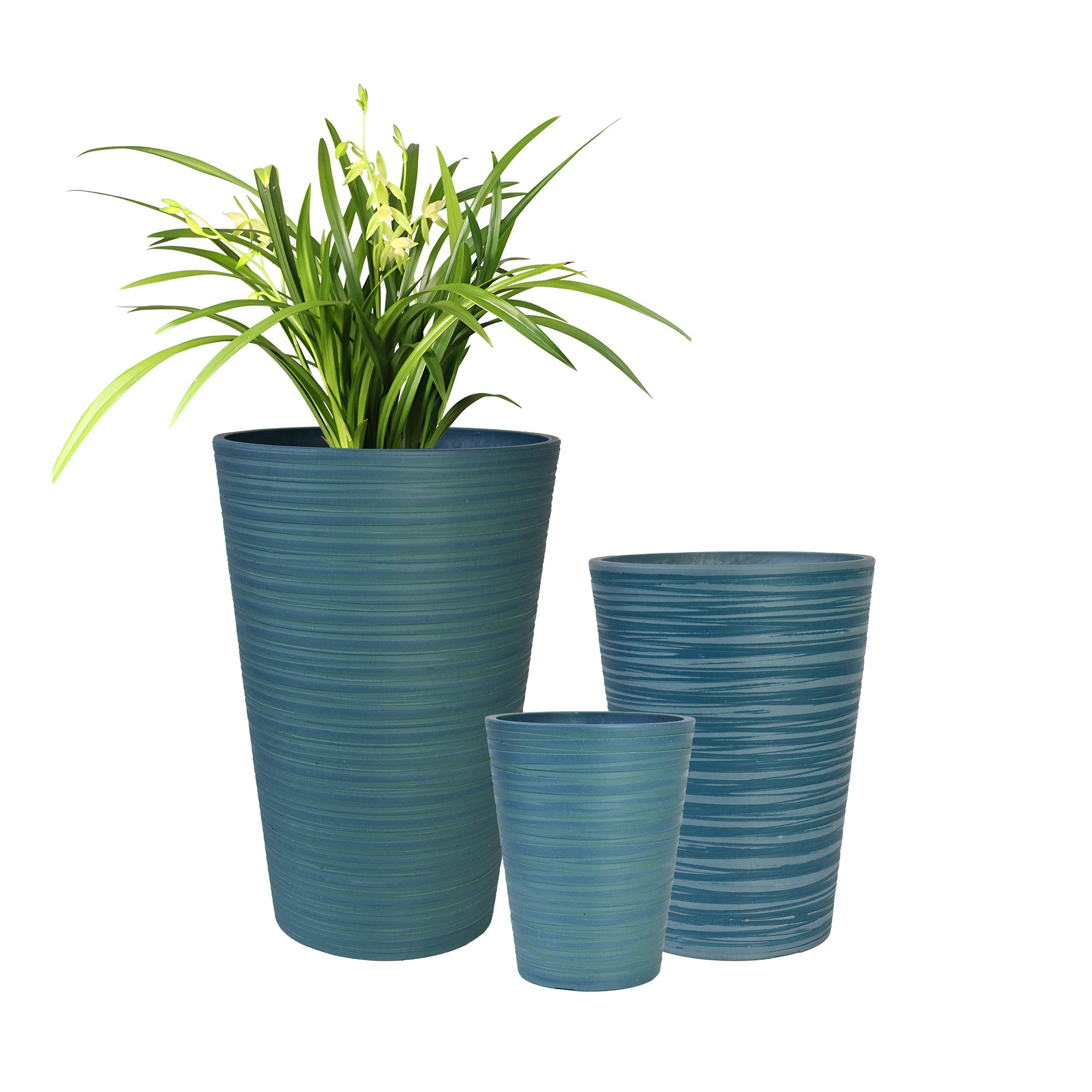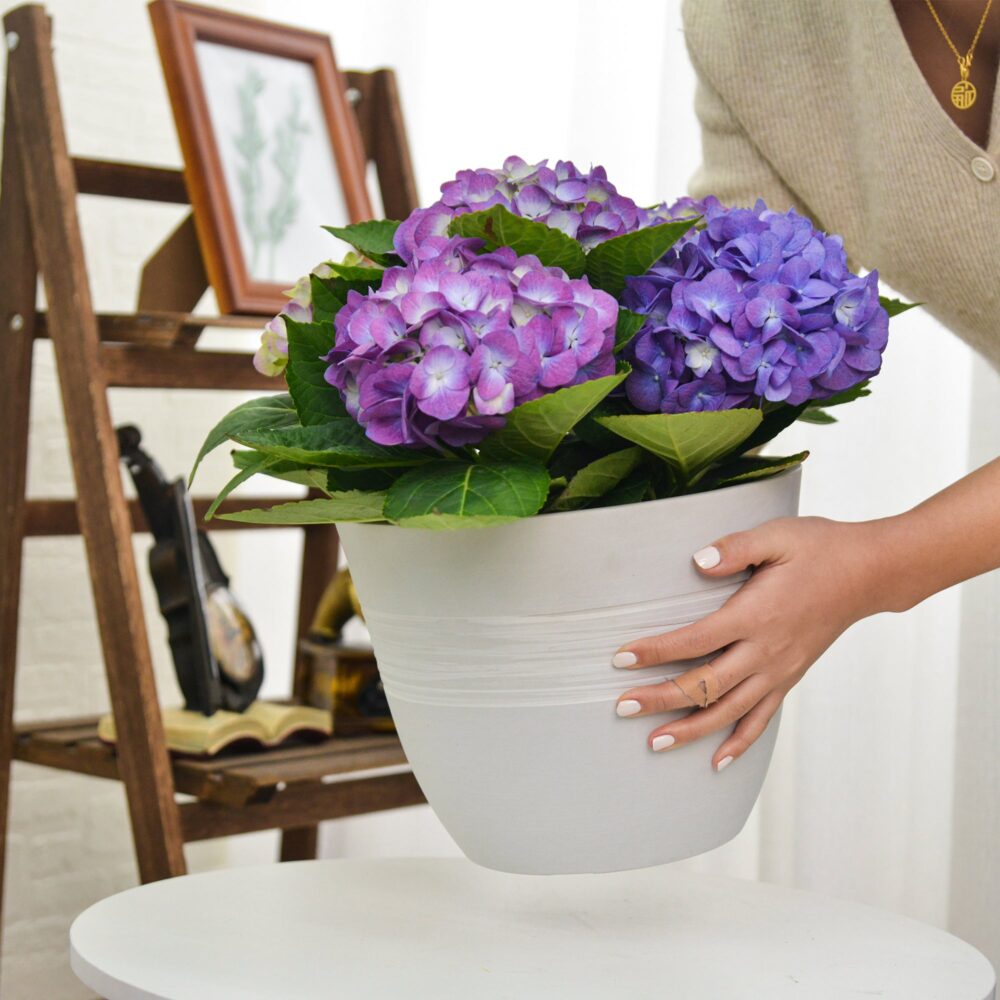Large Outdoor Planter Drainage: Key Elements & How to Ensure Good Drainage
Large outdoor planters are fantastic additions to any landscape, offering space for substantial plants and creating dramatic visual impact. However, the increased volume of soil in large containers also presents a significant challenge: ensuring adequate drainage. Without proper drainage, excess water accumulates, leading to a host of problems that can quickly kill your plants. Poor drainage is one of the most common causes of failure for container-grown plants, especially in large pots.
So, what are the key design elements of a large outdoor flower planting box’s drainage system, and how can you ensure consistently good drainage for healthy plant growth?
Why Good Drainage is CRITICAL for Large Outdoor Planters
In a garden bed, gravity helps water drain away through the native soil. In a pot, especially a large one, water can easily become trapped at the bottom. This leads to:
- Root Rot: The most devastating consequence. Plant roots need oxygen. Waterlogged soil deprives roots of air, causing them to suffocate and rot, opening the door for fungal diseases.
- Soil Compaction: Excess water can break down the structure of the potting mix, leading to compaction and further reducing aeration.
- Salt Buildup: Without water flushing through and out the bottom, salts from irrigation water and fertilizers can accumulate in the soil, damaging roots.
- Freezing Damage: In winter, waterlogged soil freezes into a solid block. The expansion can crack the planter, and sustained freezing is more damaging to roots than well-drained soil.
Good drainage is non-negotiable for the health and longevity of your container plants.
Key Design Elements of a Planter Drainage System
The primary design element of any planter’s drainage system is straightforward but essential:
- Drainage Holes: The presence, size, and quantity of drainage holes at the very bottom of the planter are paramount.
- Presence: The planter must have drainage holes. Planters sold without them (often called “cachepots” or decorative sleeves) are designed to hold a pot with drainage holes inside them, or are intended for temporary use or plants that tolerate standing water (very few do).
- Size and Quantity: For large planters holding a significant volume of soil, one small hole is insufficient. You need multiple, adequately sized drainage holes (e.g., at least 1/2 inch diameter, and several spaced across the bottom). This allows excess water to escape efficiently.
Beyond the holes themselves, the planter’s material (e.g., porous terracotta vs. non-porous glazed ceramic or plastic) can indirectly affect how quickly the soil dries, but is not a substitute for proper drainage holes.
How to Ensure and Improve Drainage
Even with drainage holes, you need to take active steps to guarantee good drainage:
- Verify and Augment Drainage Holes: Before filling a new planter, check the bottom. Are there drainage holes? Are they large enough and numerous enough for the size of the container? If not, you may need to drill additional holes using an appropriate drill bit for the material (wear safety glasses!). Ensure existing holes aren’t blocked by labels or debris.
- Use the CORRECT Potting Mix: This is perhaps the most critical factor after having drainage holes. Use a high-quality potting mix specifically formulated for containers. These mixes are designed to be lightweight, well-aerated, and drain properly. They contain ingredients like peat moss, coco coir, perlite, vermiculite, or composted bark fines that create pore space for air and water movement. NEVER use heavy garden soil, topsoil, or compost alone in a container as they compact too much, leading to poor drainage.
- Skip the Gravel or Pot Shards Layer: This is a common, but incorrect, piece of old gardening advice. Putting a layer of gravel, rocks, or broken pottery at the bottom of a planter does not improve drainage. Instead, it creates a layer where water collects (a “perched water table”) just above the gravel, effectively reducing the amount of well-drained soil available for your plant’s roots. Use soil all the way down to the drainage holes.
- Prevent Soil from Blocking Holes: To prevent fine particles of potting mix from washing out and clogging the drainage holes, you can place a piece of landscape fabric, a plastic coffee filter, or a piece of screen material over the drainage holes inside the pot before adding soil. Do not use a thick layer of anything that would impede water flow.
- Elevate the Planter: Ensure the drainage holes are not blocked by the surface the planter is sitting on. Use “pot feet,” blocks of wood, bricks, or a specialized planter dolly to lift the planter slightly off your patio, deck, or the ground. This allows water to freely exit the drainage holes and prevents the pot from sitting in standing water.
- Ongoing Maintenance: Periodically check that the drainage holes remain clear. If you notice water pooling on the surface for a long time after watering, probe the soil gently to check for compaction or check if roots might be blocking the holes.
Conclusion
For healthy, thriving plants in large outdoor planters, excellent drainage is essential. The key design element is having sufficient, adequately sized drainage holes at the bottom of the pot. Beyond that, ensuring good drainage is achieved by using the correct, well-draining potting mix formulated for containers and elevating the planter to allow water to escape freely. Avoid the counterproductive practice of adding gravel layers. Prioritizing drainage from the start will save you from potential plant heartbreak down the line.
Plant Pots 6 inch 8 inch 12 inch for Indoor Outdoor Plants, Set of 3 Modern Decorative Planter with Drainage Hole, Decorative Flower Pots
By greenship-seo|2025-04-10T06:38:40+00:00January 16, 2025|Categories: Hand-carving Series|Tags: Decorative Flower Pots|
Planter 5 in W / 8 in W / 12 in W or Indoor Outdoor Plants, Modern Decorative Plant Pots with Drainage Hole, Decorative Flower Pots
By greenship-seo|2025-04-10T06:37:58+00:00January 16, 2025|Categories: Hand-carving Series|Tags: Decorative Flower Pots|
20T
By greenship|2024-08-13T06:42:22+00:00August 13, 2024|Categories: Hand-carving Series|
K2-11T
By greenship|2024-08-13T04:21:25+00:00August 13, 2024|Categories: Hand-carving Series|
Planter 6 in W / 8 in W / 12 in W Indoor or Outdoor Plants, Modern Decorative Plant Pots with Drainage Hole, Decorative Flower Pots
By greenship-seo|2025-02-06T13:43:53+00:00January 16, 2025|Categories: Hand-carving Series|Tags: Decorative Flower Pots|
Planter for Indoor Outdoor Plants, Set of 2 Modern Decorative Plant Pots with Drainage Hole, Decorative Flower Pots
By greenship-seo|2025-01-14T12:26:44+00:00January 14, 2025|Categories: Hand-carving Series|Tags: Decorative Flower Pots|








